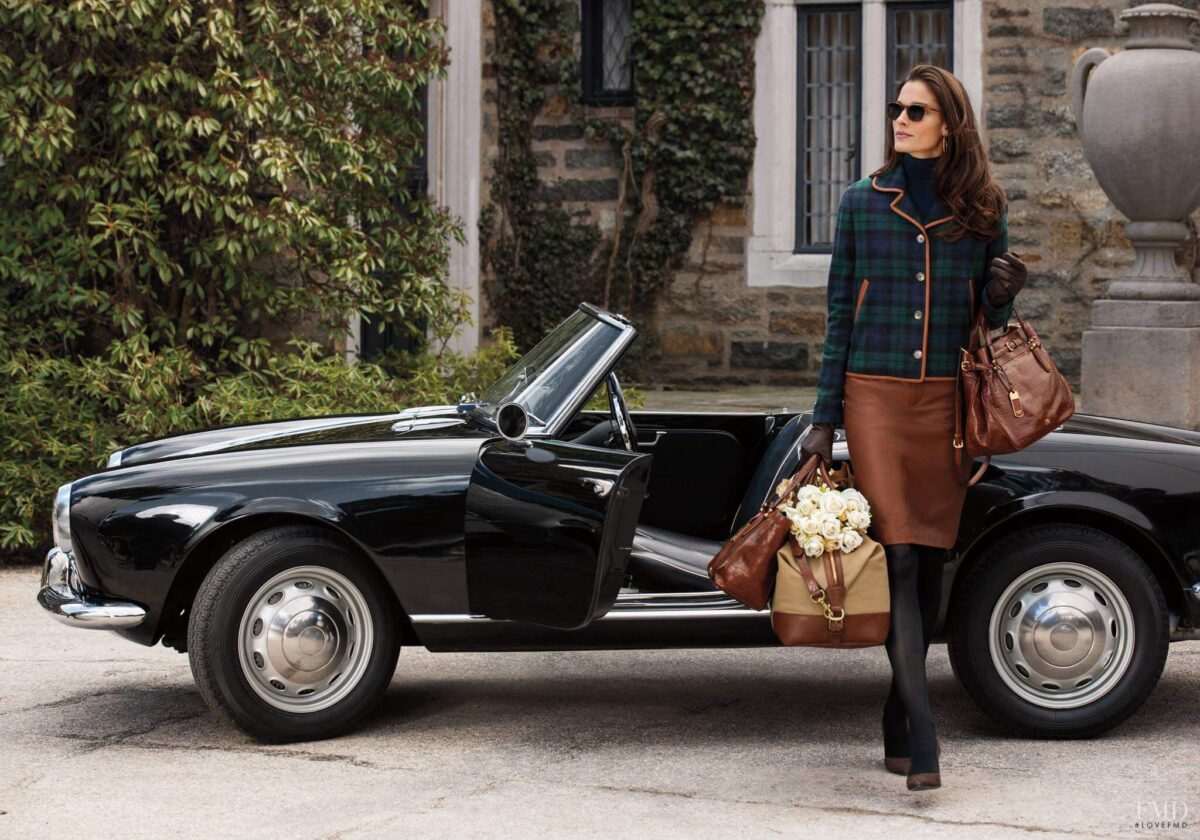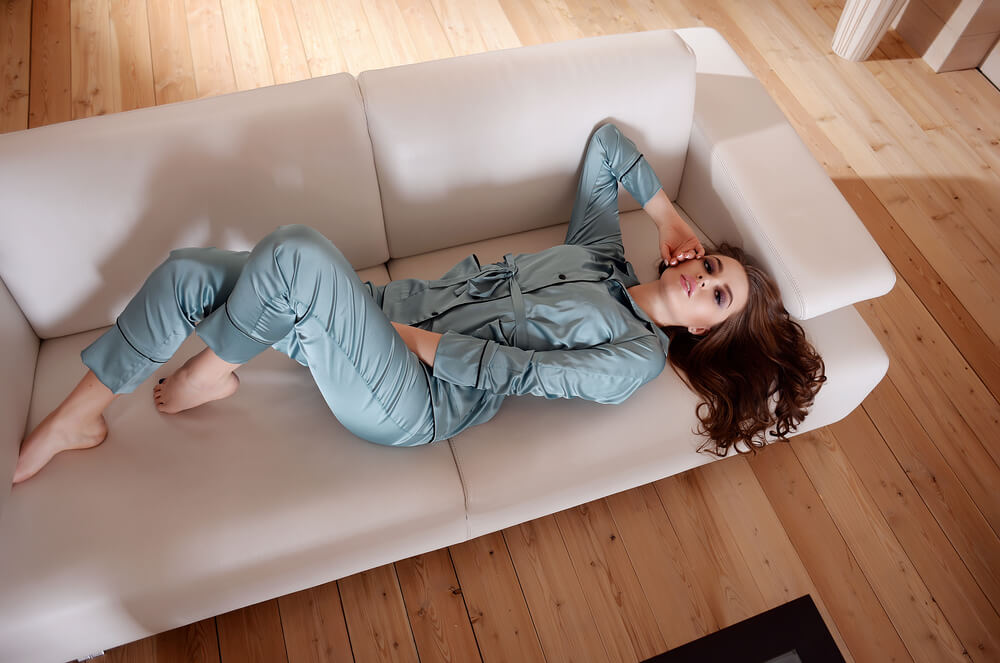

The color of clothing is a tool for self-identification of a woman. By changing the color of a blouse, dress or pants you can both attract and repel a man. Psychological factors, traditions and norms affect the choice of color.
In the early 16th century Queen Elizabeth I made a statement. She outlined strict dress code rules, which concerned, among other things, the color of clothing. For example, in England only high-ranking people could wear purple, which allowed demonstrating a person's wealth, his high rank and was perceived as a symbol of wealth.

The perception of purple during the reign of Elizabeth was due to the high cost of its production, which eventually affected its psychological perception. The idea that purple was expensive was so ingrained in the minds of the inhabitants that when they saw a man in such clothing, they subconsciously perceived him as a rich man and a representative of the nobility.
How the color of clothing can affect a person and the people around him:
The psychology of color in clothing is not only an emotional perception, dictated by instincts and brain signals. Stereotypes and traditions make their own adjustments in this area.
The most popular color-related stereotype is that blue and blue are masculine colors, and pink is feminine.
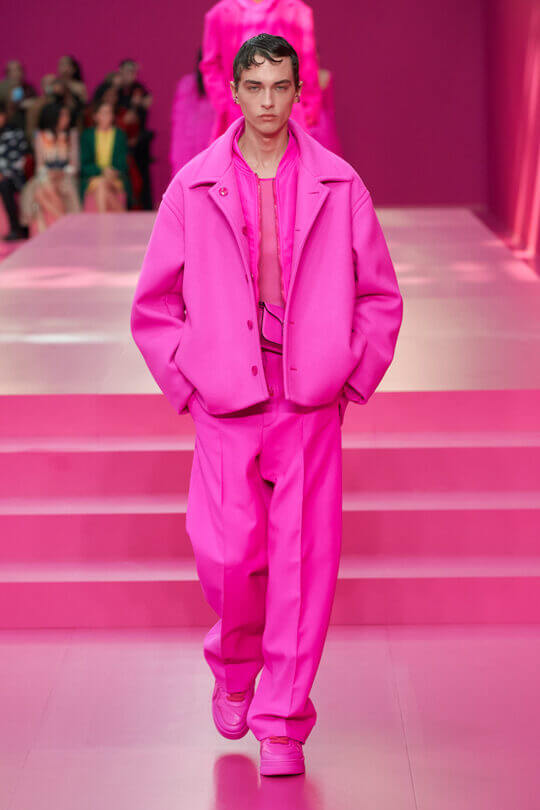
Valentino
The tendency toward this color separation dates back to the end of the 18th century. Later this stereotype was subject to numerous reformation, but in the 21st century it continues to exist, although considerably weakened, thanks to the trend towards equality.

Giambattista Valli
Although society is moving toward the acceptance of different preferences, including in color, stereotypes about men's and women's colors continue to exist.
It is customary to consider colors as feminine:
Male colors often include:
The only color that is not stereotyped is black. It belongs to both the women's and men's palette.
What does this mean for psychology and emotional perception?
The second important companion to the psychology of color is tradition, and in each country or religion they will have a different impact on the emotional perception of a particular palette.

Such contradictory patterns can be traced in dozens, which means that the psychology of color, its emotional impact is an unstable concept and changes, including under the influence of geographic location.
Before discussing popular colors and what emotions they evoke, let's add one important nuance to the picture: each particular color is perceived by a person based on life experience, accumulated knowledge, mood, character. One will see red as a threat and danger, the other as passion and energy.
The psychology of color in clothing is imperfect. It is based on guesses, observations, and patterns. The following color transcripts are the generally accepted meaning of colors and how most people perceive a particular color. But there is always room for individual perception.
Meaning of red color: power, passion, anger.
Red is one of the most controversial colors. It is equally often perceived as the color of passion and the color of anger. Red in clothing psychology interprets as a symbol of confidence and vitality.
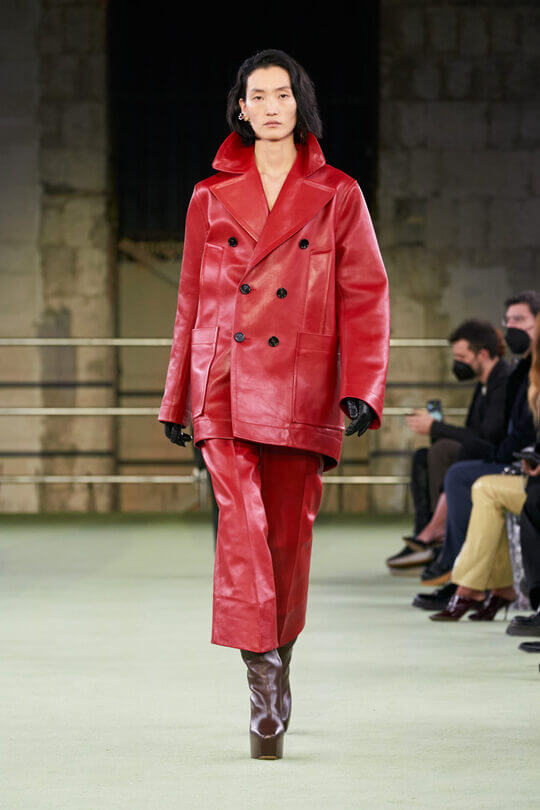
Bottega Veneta
When to wear red: choose red if you want to stand out in the crowd, to impress, to show courage.
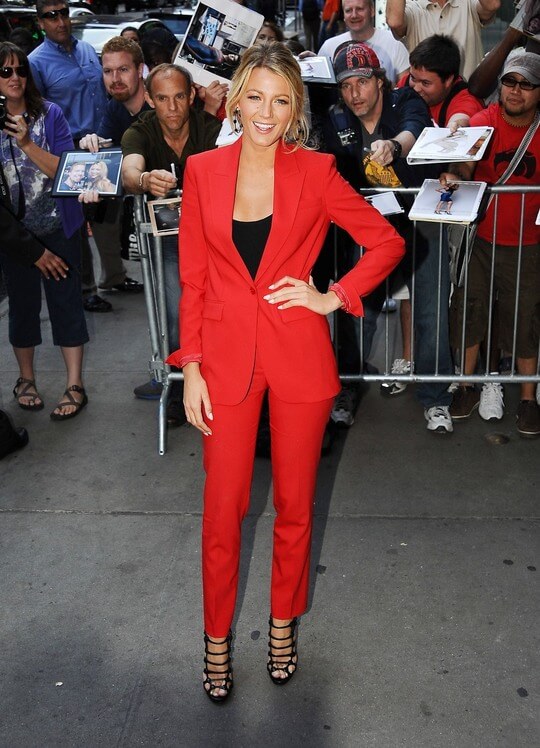
Blake Lively
Pay attention that red is an active color, so on girls with a neutral appearance will take all the attention to itself. We recommend choosing red for women with expressive facial features and a contrasting color type.
Psychological meaning of black color: elegance, mystery, courage.
Black clothing is a powerful psychological method, which in the context of different events can evoke different emotions. For example, in the office dress code it translates elegance and confidence, and in tragic cases - deep mourning. One can definitely say that black enhances any emotion.
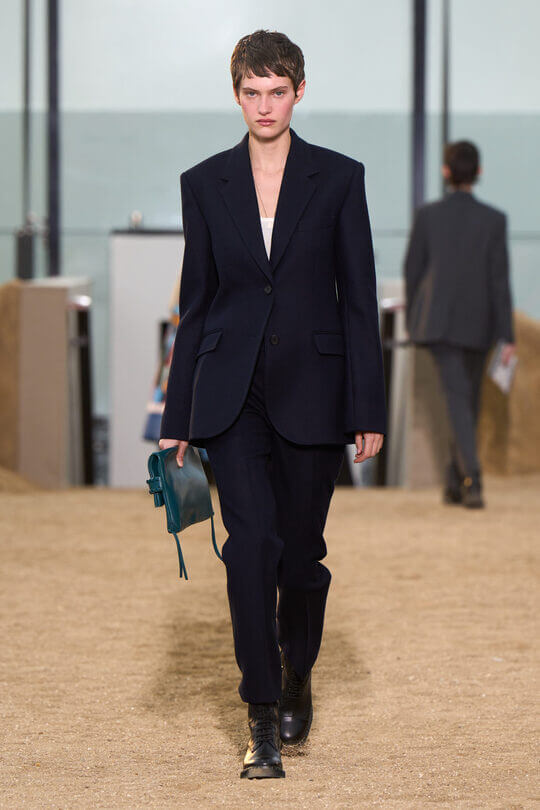
Chloé
A survey conducted by the popular online sportswear store Buy Tshirts Online proves that black inspires confidence more than any other color.
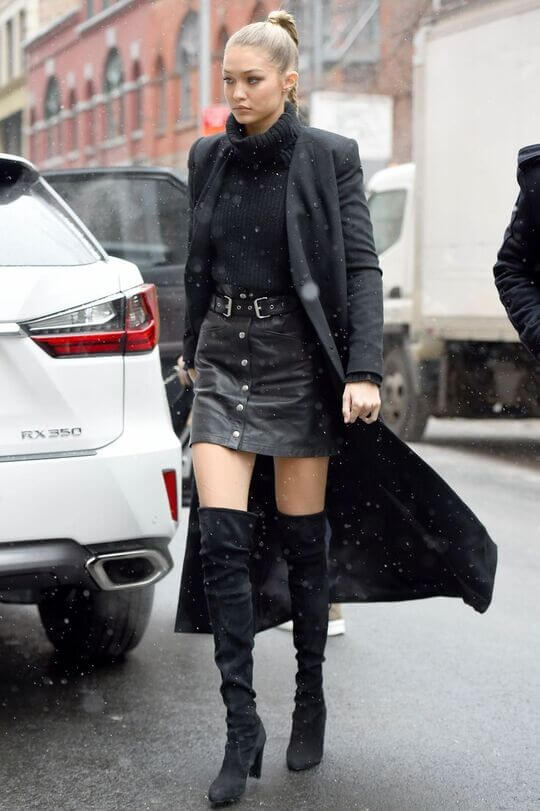
Gigi Hadid
When to wear black color: if you want to enhance the image, to feel strong and authoritative. Great for the business environment, where you need to form in the interlocutor trust and confidence in professionalism.
In psychology white color means: calmness, emptiness, innocence.
In most cultures, and therefore for most people, white is a symbol of purity. It does not provoke, does not intensify, and often does not evoke any emotion other than peacefulness. Only rarely can it be perceived as a sign of emptiness, a perception usually associated with traditional and religious views. In India, for example, white is the color of mourning, so it is not associated with purity and tranquility.
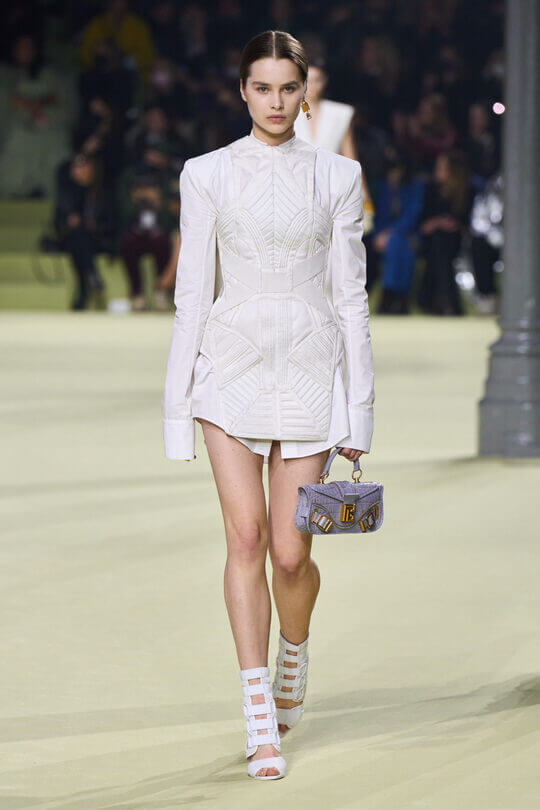
Balmain
When to wear white: if you want to feel "new". Great for the first day of work in a new company or for a first date - any situation where there are new beginnings.
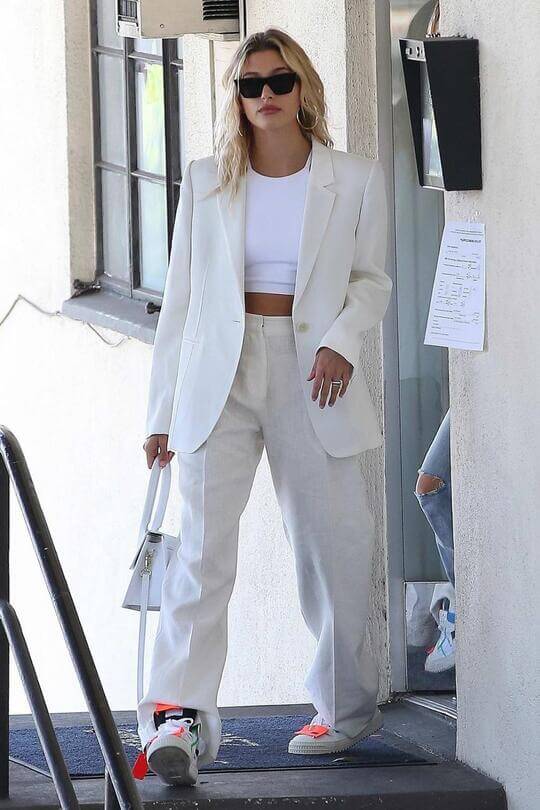
Hailey Bieber
Purple in psychology: wealth, power, mystery.
The color purple was considered a symbol of wealth in the 4th and 5th centuries. At that time, it was due to the high cost of production. Since that time, people's psychology has established the belief that purple is a demonstration of power.

Elie Saab
Gradually the meaning of purple expanded and now it is more often perceived as mysterious, fantastic, mysterious.
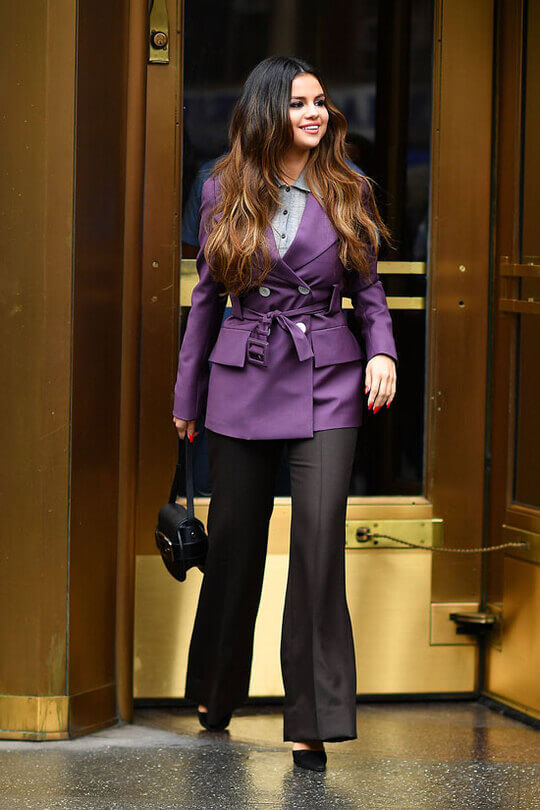
Selena Gomez
When to wear it: purple will make you stand out at work or a party, make the image bright, but leave a note of mystery. You can wear it in almost any style - from business to glamour.
Meaning of blue color: stability, tranquility, sadness.
The color of the sky and sea is often associated with tranquility and stability. Looking at the color blue makes others feel calmer, relaxed. Sometimes this influence is so strong that tranquility is replaced by a slight sadness.
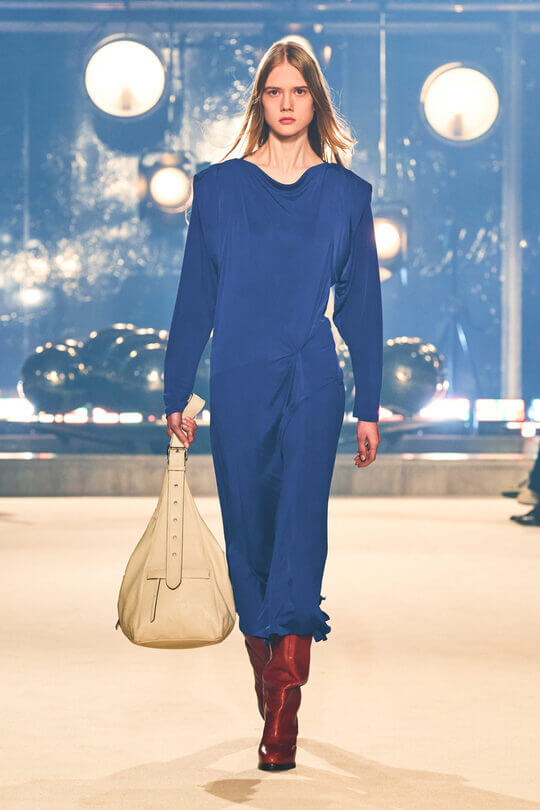
Isabel Marant
Also, blue stimulates the brain, activating the part of it that is responsible for creativity and creativity. This conclusion is confirmed by the UBC Sauder School of Business study.

Cara Delevingne
When to wear blue: if you need to feel confident. Choose a blue outfit when you have an exciting event waiting for you, whether it's an important business meeting, meeting new people or an important exam.
Meaning of green in clothes: good luck, security, envy
Green is one of the most comfortable and pleasant colors in terms of color psychology in clothing. It gives others a sense of security and boundless tranquility. These emotions are associated with the association of green as the color of nature and solitude. In some situations, it can translate envy, but it depends on the context.
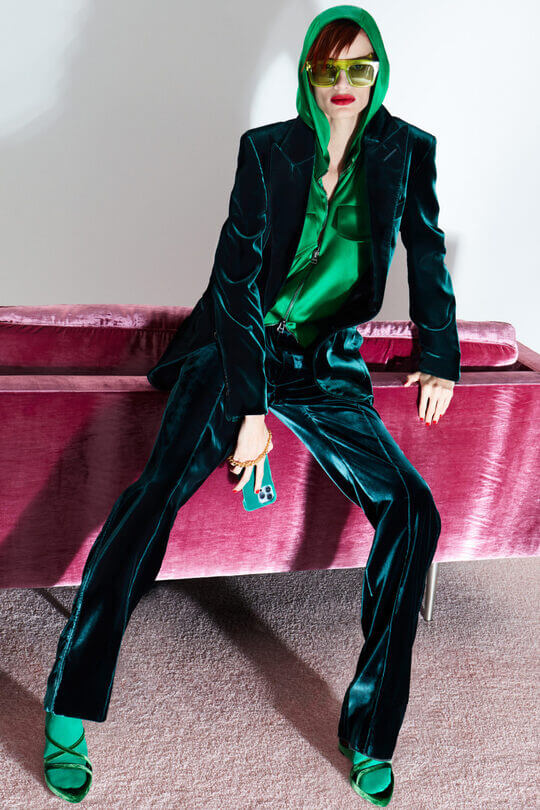
Tom Ford
When to wear green: if you need to relieve tension - from yourself or the audience.
Meaning of yellow in clothes: warmth, brightness, attention.
The yellow color in the clothes first of all attracts attention - this is due to habits: many information signs are colored yellow. It is also the color of traffic lights, when it requires drivers to pay attention to the change of signal. It is also the color of the sun, which means energy - it is as warm and dynamic as it is eye-catching.
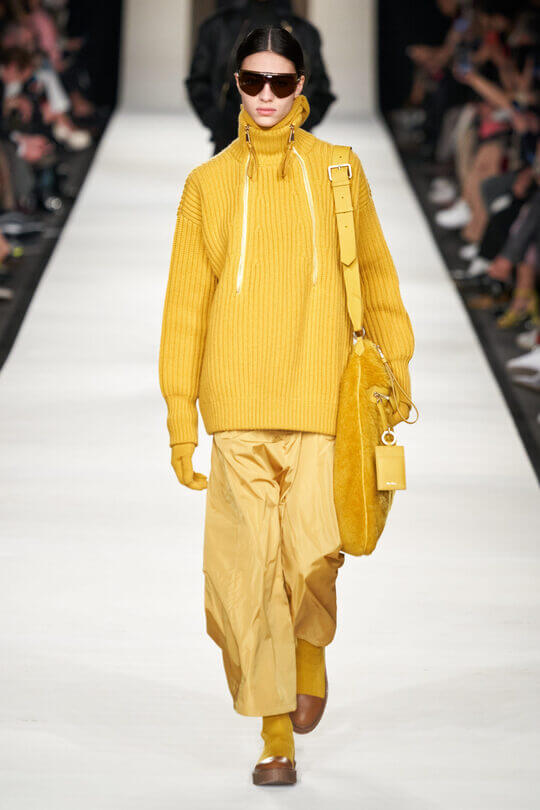
Max Mara
When to wear yellow: if you want to cheer yourself and others - when you shine yellow, it is impossible to indulge in sadness.

Jennifer Lopez
Meaning of grey: responsibility, calmness, education.
When it is important to convince others that you can cope with any task - the color gray in clothing is the best assistant. It will show intelligence and make others think that you are a calm and reasonable person. Even if you're not.
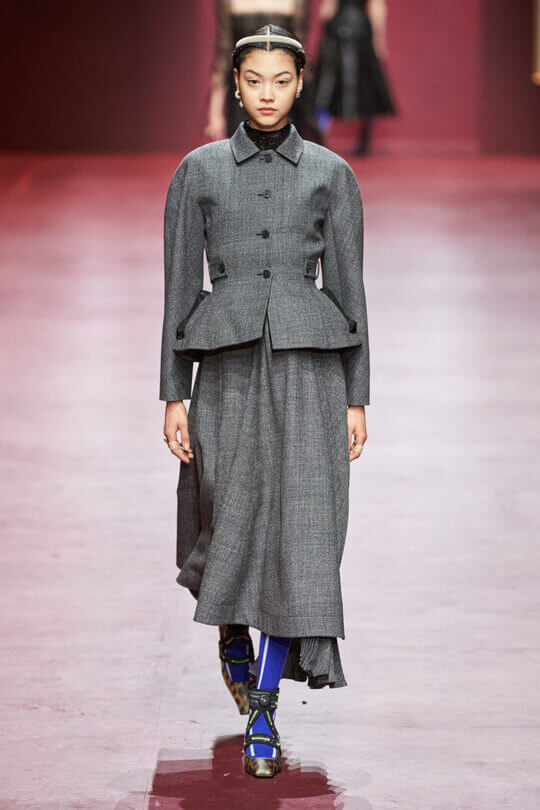
Dior
When to wear gray: in cases where you need to show seriousness and a high level of knowledge and erudition.
Meaning of brown in clothes: isolation, security.
Brown is a neutral color, perfect for a basic closet. It does not draw attention to itself, gives a sense of security and privacy.
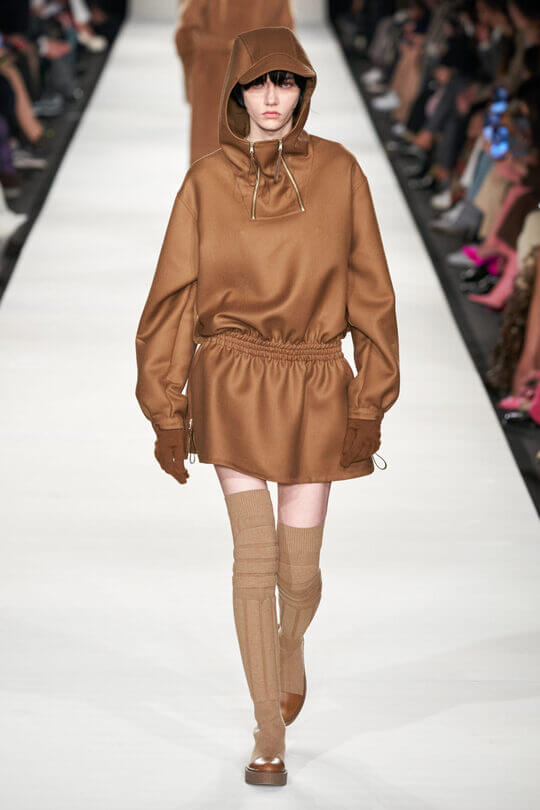
Max Mara
When to wear brown: in situations where you need to slow down and think a little. Brown is good for hiking, cozy evenings by the fireplace, walking. In everyday life, an abundance of brown can cause boredom and apathy, so it is better to dilute it with active shades.
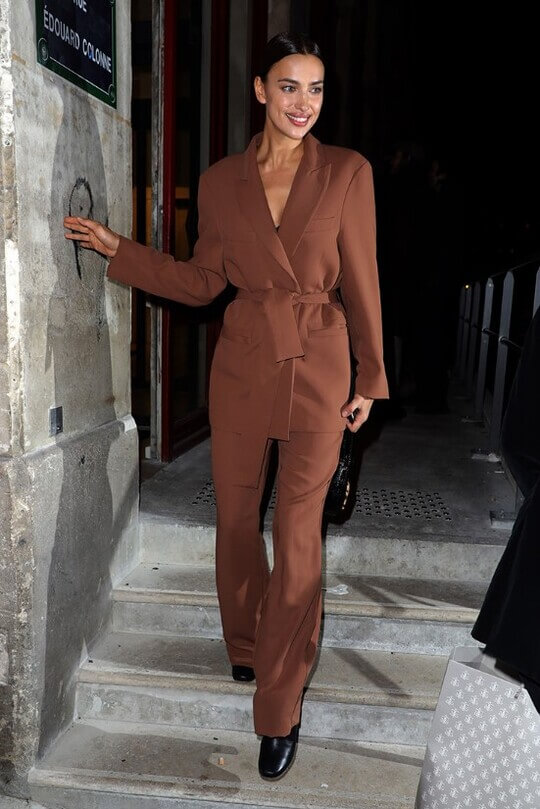
Irina Shayk
In addition to the cheat sheet above, we've compiled the most common situations and picked the colors that would fit in best.

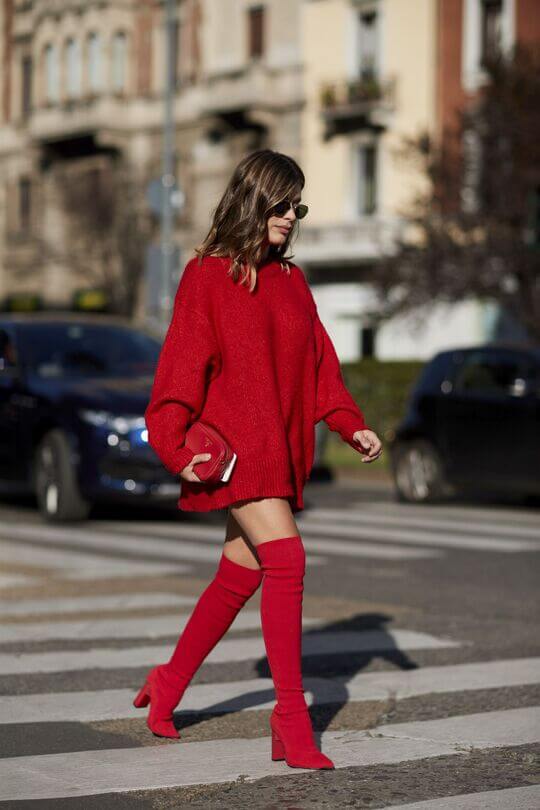
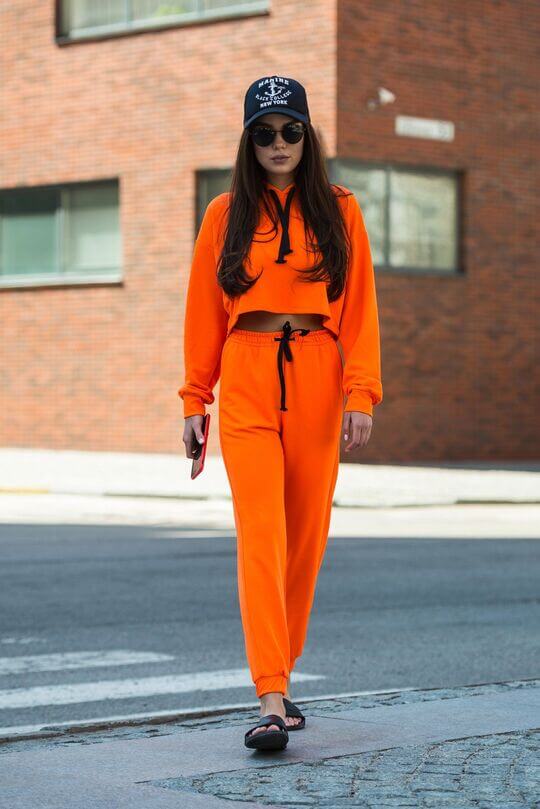
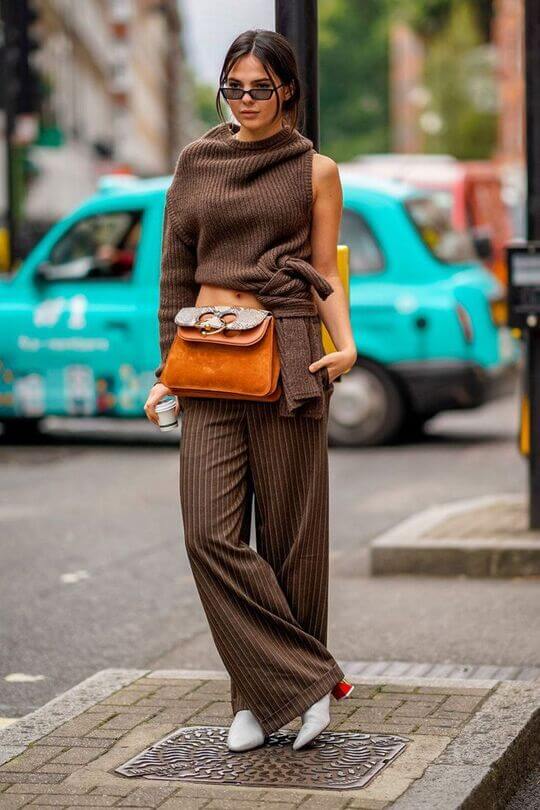
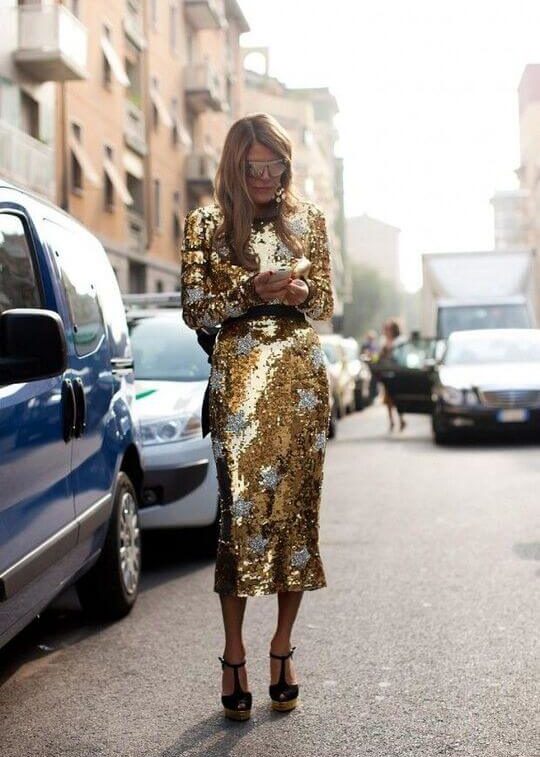
Don't know what color to choose for another event - write in the comments, we'll help!
What is the most annoying color?
Irritation is most often caused by shades of red. Choose clothes in crimson and scarlet with caution.
What colors improve your mood?
The leader in improving mood is yellow. In second place is green - it helps to suppress negative emotions and find balance.
What colors in clothing inspire confidence?
Black, gray and green are the colors of stability and security. They inspire confidence and dispose of interlocutors.
What color do people like best?
According to a study by the analytical company YouGov, the most favorite color of the inhabitants of the planet is blue.








